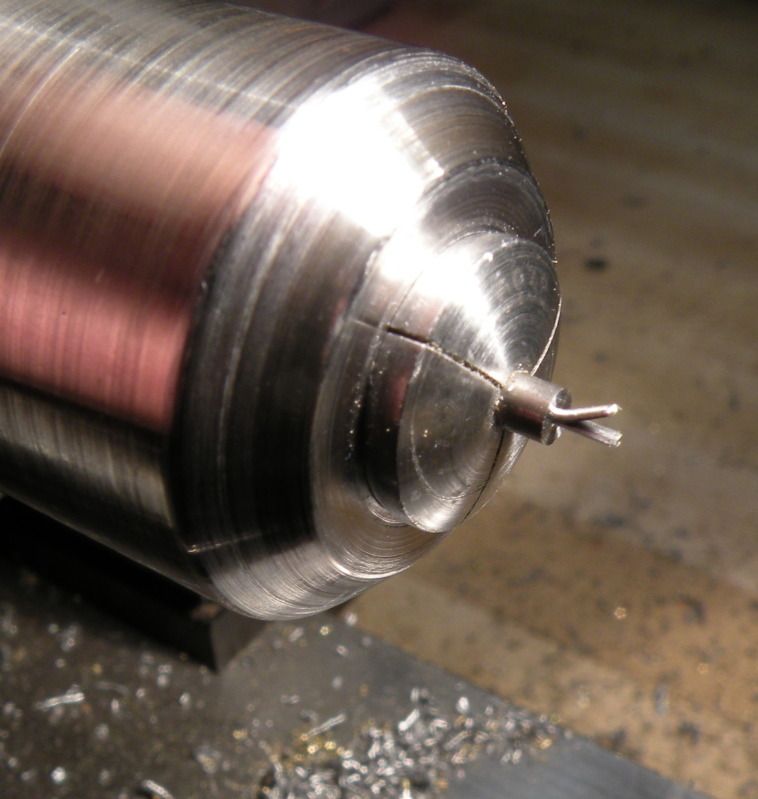rivett608
Diamond
- Joined
- Oct 25, 2002
- Location
- Kansas City, Mo.
I am making some knobs and the steel keeps splitting...... I don't think I have ever had this problem before. I have been using stock from the same source for years. (bought a bunch)... I think it is 12L14 or some other leaded screw machine stock... all I know is it turns as easy as brass. The stock (you all would call it wire) is 3/32".... I am turning it down to .025", file a chamfer on the edge and run a 0.075 MM die down it...... and sometimes it just splits!!!! I have bent these a little so you see the separation. It seems maybe to split less if I take it from .093" to .025 in one pass than it does if I take lighter cuts.... could that have something to do with it? Or bad steel? There was a hole in the end from a earlier job but I faced it off well past that, but could that have something to do with it? I just want to know why.... gotta keep learning.
Thanks


Thanks




